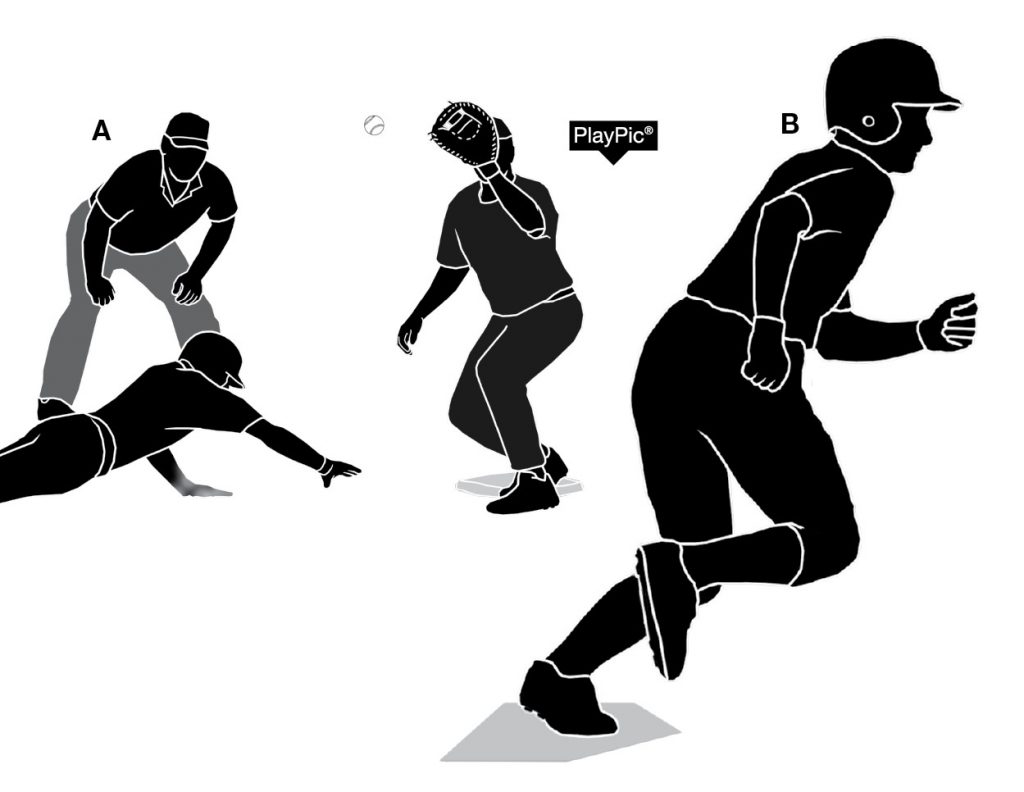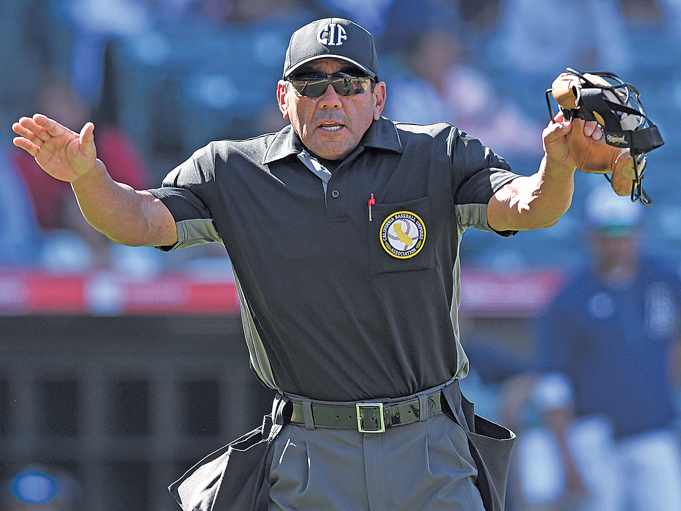Other than umpires, there are not many people who understand there can be four outs in an inning. The purpose of getting a fourth out is to negate a run scored as a result of a baserunning infraction. Baserunning violations only result in an out when an appeal is made. The opportunity for a fourth out has not occurred very often in professional baseball and there apparently has never been a successful fourth-out appeal in MLB, at least in modern times. Unless noted, the material applies equally to NFHS, NCAA and pro rules.
In order to understand the benefit of a fourth out, we must first understand the types of third outs that prevent a run from scoring even though a runner touches the plate before the third out is actually made. There are three general ways such a run is not scored. They are when the third out is made by the batter-runner before he touches first base; another runner being forced out; or a preceding runner who is declared out upon appeal because of a baserunning infraction. The role of an appeal in the third instance is obvious, but if an appeal can create a fourth out that falls under any of those three categories, a run that has been recorded can be erased.

The baserunning infractions that can be appealed are: failing to properly retouch a base (leaving too soon); and missing a base, including failing to touch home immediately after overrunning/oversliding. In NCAA and pro, a runner who takes a running start on a tag up must also be appealed (NCAA 8-6a2; pro 5.09c1 Cmt.), but in NFHS such a runner is immediately declared out (8-4-2o).
Of course there is a limit on when a fourth-out appeal can be made, and that is before the defensive team leaves the field. That means before the pitcher and all infielders have crossed the foul lines. NCAA further specifies the appeal must also be made before the catcher has left his position on the way to the dugout. If an appeal is made after a game-ending play, the preceding applies for NCAA and pro, but in NFHS the appeal can be made any time before the umpires leave the field (NFHS 8-2 Pen.; NCAA 8-6b8; pro 5.09c).
Here are some plays that illustrate the fourth-out appeal, beginning with the missed opportunities in MLB.
In a July 1, 1989, game at Yankee Stadium against Milwaukee, in the bottom of the eighth inning, the Yankees had a 4-1 lead with Mike Pagliarulo on third and Bob Geren on first and one out. The runners were off on a squeeze play as Wayne Tolleson popped up a bunt. Pitcher Jay Aldrich caught it for the second out and threw to first to double-up Geren for the third out. Pagliarulo, who did not tag up, crossed the plate before the third out and his run should have counted; the third out was a time play, not a force play. The Brewers failed to appeal that Pagliarulo left third too soon for a fourth out that would have negated his run.
Plate umpire Larry Barnett made no signal that the run counted. Between innings, first-base umpire John Hirschbeck informed Barnett that he should signal the official scorer because the run counted. Barnett made an indistinct signal. Everyone in the park thought the score was 4-1 when it was actually 5-1.
The Detroit Tigers and Cleveland Indians played at Comerica Park on June 24, 2016. In the bottom of the ninth, the Tigers had Ian Kinsler on second and Cameron Maybin on first with one out, trailing 7-4. Miguel Cabrera hit a shot to deep center and Indians center fielder Rajai Davis gloved the ball and juggled it, but held on for the catch with his back to the infield. Kinsler and Maybin, thinking the ball would not be caught, took off without tagging up.
Davis fired the ball to Jason Kipnis, the cutoff man, who threw home to catcher Chris Gimenez, too late to get Kinsler. Gimenez then threw to Mike Napoli at first base to double-up Maybin for the inning-ending third out. Because Kinsler crossed the plate on a time play before the third out at first was recorded, Kinsler’s run counted and the game ended with the Indians winning, 7-5. Because Kinsler never tagged up at second base, if Napoli, after making the third-out putout at first base, threw to second base to appeal that Kinsler never tagged up, Kinsler would have been called out for the “fourth out” and his run canceled.
Both MLB plays involved a runner leaving a base too soon. Here is a play where the fourth out would be a force out, followed by one where the batter-runner did not reach first base safely.
Play 1: With two outs and runners on first and second, B5 hits a ball in the right-center gap and is thrown out going for a triple. R1 and R2 score before the out at third, but R1 misses both second and third. Ruling 1: The defense must properly appeal to cancel both runs. An appeal on R1 at third will cancel R1’s run but not R2’s score. An appeal on R1 at second will cancel both runs because that would be a force play. Both appeals may be made, but if the first appeal is at second, an appeal at third would be unnecessary.
Play 2: With two outs and runners on second and third, B5 makes a half swing on a 3-2 pitch in the dirt. The ball gets away from F2 as R3 scores easily, but R2 is thrown out after overrunning third to seemingly end the inning. The defensive coach asks for an appeal on the swing and the base umpire rules it a strike. F5 then throws to F3, who tags first for the out on B5, who instead of running had watched the play. Ruling 2: The fourth out on B5 negates R3’s run, which cannot count if the batter fails to reach first base safely.
What's Your Call? Leave a Comment:
Note: This article is archival in nature. Rules, interpretations, mechanics, philosophies and other information may or may not be correct for the current year.
This article is the copyright of ©Referee Enterprises, Inc., and may not be republished in whole or in part online, in print or in any capacity without expressed written permission from Referee. The article is made available for educational use by individuals.














